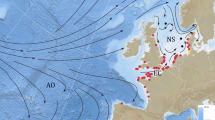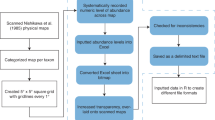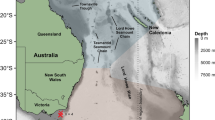Abstract
CARÚPANO is a thriving seaport on the northern coast of Venezuela, midway between the peninsulas of Araya and Paria, in lat. 10° 14′ 15″N., and long. 63° 18′ W. from Greenwich, and therefore in close vicinity to the channel which leads from the Atlantic into the Caribbean Sea between Tobago and Grenada on the one side, and Trinidad and the South American mainland on the other side. Through this channel enters the great western current of the Caribbean Sea, running at the rate of about one mile and a half an hour, though not with much regularity. The coast-line forms the western prolongation of the northern shore of Trinidad, trending almost due west. The water is rather shallow to a considerable distance from the land, the 100-fathom line due north of Carúpano being about 60 miles off the shore,1 which gives for the sea-bottom a gradient of but 1.67 per 1000.2
This is a preview of subscription content, access via your institution
Access options
Subscribe to this journal
Receive 51 print issues and online access
$199.00 per year
only $3.90 per issue
Buy this article
- Purchase on Springer Link
- Instant access to full article PDF
Prices may be subject to local taxes which are calculated during checkout
Similar content being viewed by others
References
Wall and Sawkins, "Report on the Geology of Trinidad," London, 1860 p. 198.
Author information
Authors and Affiliations
Rights and permissions
About this article
Cite this article
ERNST, A. On Some Interesting Cases of Migrations of Marine Fishes on the Coast of Venezuela at Carupano . Nature 33, 321–322 (1886). https://doi.org/10.1038/033321a0
Issue Date:
DOI: https://doi.org/10.1038/033321a0
Comments
By submitting a comment you agree to abide by our Terms and Community Guidelines. If you find something abusive or that does not comply with our terms or guidelines please flag it as inappropriate.



